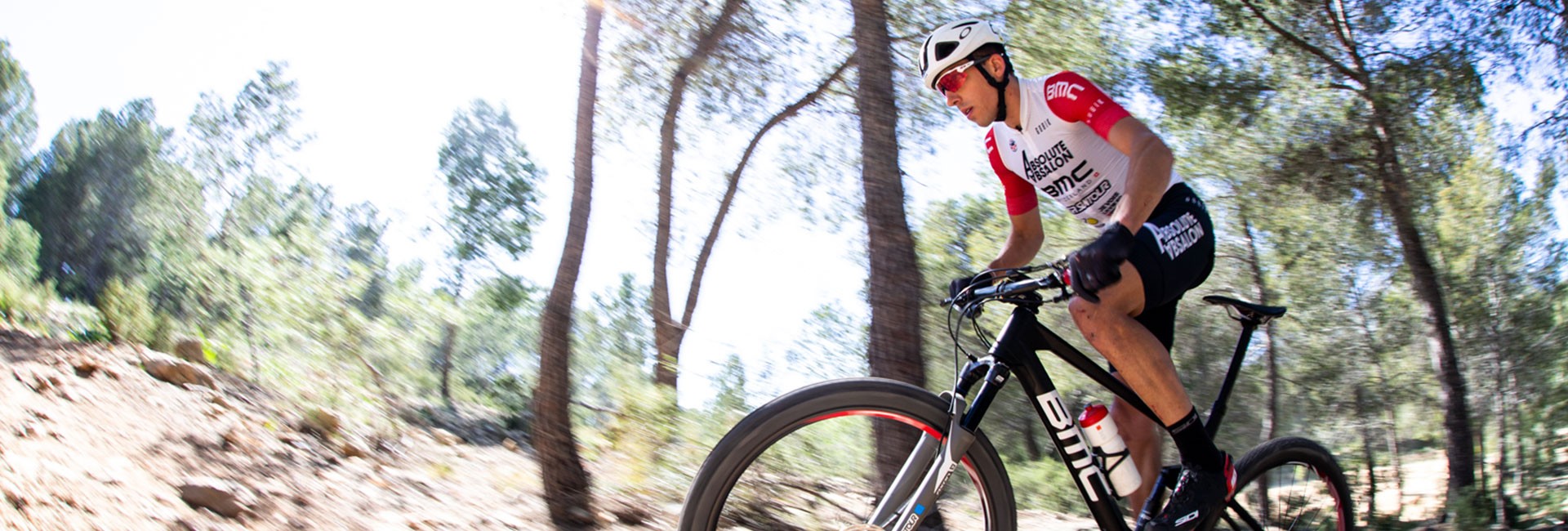Mountain biking is a fun sport endurance athletes can use for cross-training. If you’re a marathon runner or trail runner looking to spice up your training with something new and challenging, read on to find out more about why and how to start mountain biking.
While optimizing training schedules and diet plans to squeeze out maximum performance is oftentimes necessary for endurance athletes, a tight focus on efficiency can lead to, let’s face it, a monotonous daily schedule.
Of course, it’s necessary to stick to the basics and remember training won’t always be fun, but it’s important to mix things up from time to time to not only stay engaged, but also prevent burnout.
READ MORE: 3 Outdoor Sports for Cross-Training
If you feel like it’s time to try something new, mountain biking is a great option for cross-training for runners.
To learn more about how to start mountain biking, here Jordan Sarrrou – a professional mountain bike rider for team Absolute-Absalon-BMC who is preparing for the Olympic Games – shares what he loves about his sport, tips for mountain biking newbies and an inside look at his training schedule.
Our favorite bit of advice? Enjoy the ride.
Why mountain biking?
It’s an endurance athlete’s dream sport – it not only boosts core and leg strength and cardiovascular endurance, but it also improves balance and coordination.
Pair this with the high-speed descents and technical terrain, and you have the perfect recovery and cross-training outlet that will directly benefit your training goals all while infusing a bit of fun.
How did you get into mountain biking?
It’s a family affair – I started mountain biking thanks to my cousin and my uncle. My uncle is the president of the mountain bike club of my city.
After years of playing football, I was bored. I decided to join the Saturday rides with my uncle and went every Sunday to watch my cousin’s races.
I was sold right away and started to do some trails, downhills and cross-country.
What’s the best and worst about mountain biking?
I’d say being able to live my passion every day is the best job in the world. Being outside in the forest, in the mountains and being able to discover new places and trails, I just love it. The outdoors is my playground and the feeling of freedom when I ride is unique.
The worst? High-intensity training, but I know why I need to go through it.
What’s your training plan like?
I keep my training routine pretty much the same as I know myself and what’s working. I have a great team: my coach plans my training and season and I also have a personal trainer for specific strength training.
I train eight to nine times a week, and each session is about two hours and thirty minutes. It really depends on which training block I’m in.
I integrate tempo, sprints, intervals, and MAP training sessions.
I do strength training two times a week – mostly strength, power, and isometric exercises depending on which training block I’m in.
Jordan Sarrou’s favorite mountain biking trails
- At home around Lyon.
- Stellenbosch in South Africa.
- Puy-Saint-Vincent in the South Alps in France.
When Have you encountered fear when mountain biking?
During my first World Championships in Cairns, Australia. The trails were very difficult with big rocks, and it took me a while to dare to ride them.
To practice overcoming my fear, sometimes at home I like to challenge myself to do big jumps. I try to be as relaxed as possible while being very focused on the trail I have to take. But I am also looking for the adrenaline rush and it’s rewarding to have managed a complicated jump or tough section.
The essentials and tips For mountain biking
Mountain biking gear
My bike is a BMC Fourstroke. I also use the Polar M460 and Polar Vantage V. I like to look at power, FC, speed, D+ and distance.
Remember to properly adjust the suspension according to the type of trail, and properly pump the tires.
Be ready and Anticipate
Learn to anticipate during downhills. On a track that you know, you need to anticipate and be ready for what’s coming. You need to look up ahead without losing the focus on the front wheel.
Be realistic about your skills
Pick your itinerary and route according to your skill level. If you ride once a week on Sundays, for example, you should look for trails that are quite easy, but still include some challenging sections. The more you ride and progress the more difficult trails you will be able to ride.
Ride with a group
Riding with a group helps to push yourself even more and make progress. With a group you have a shared goal, and challenging each other is a great way to improve.
Enjoy the ride!
If you liked this post, don’t forget to share so that others can find it, too.
Or give it a thumbs up!
I like this article
Please note that the information provided in the Polar Blog articles cannot replace individual advice from health professionals. Please consult your physician before starting a new fitness program.





